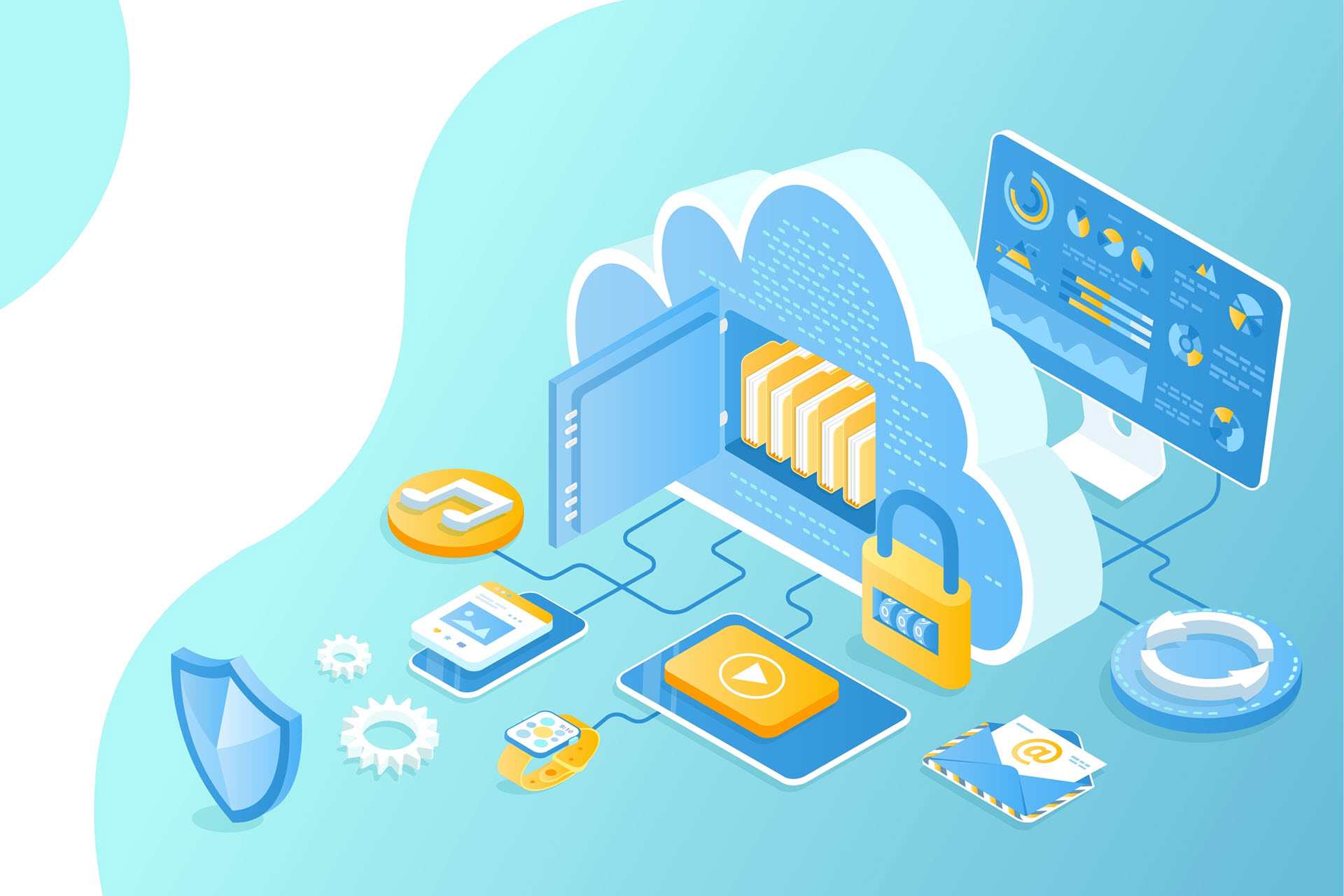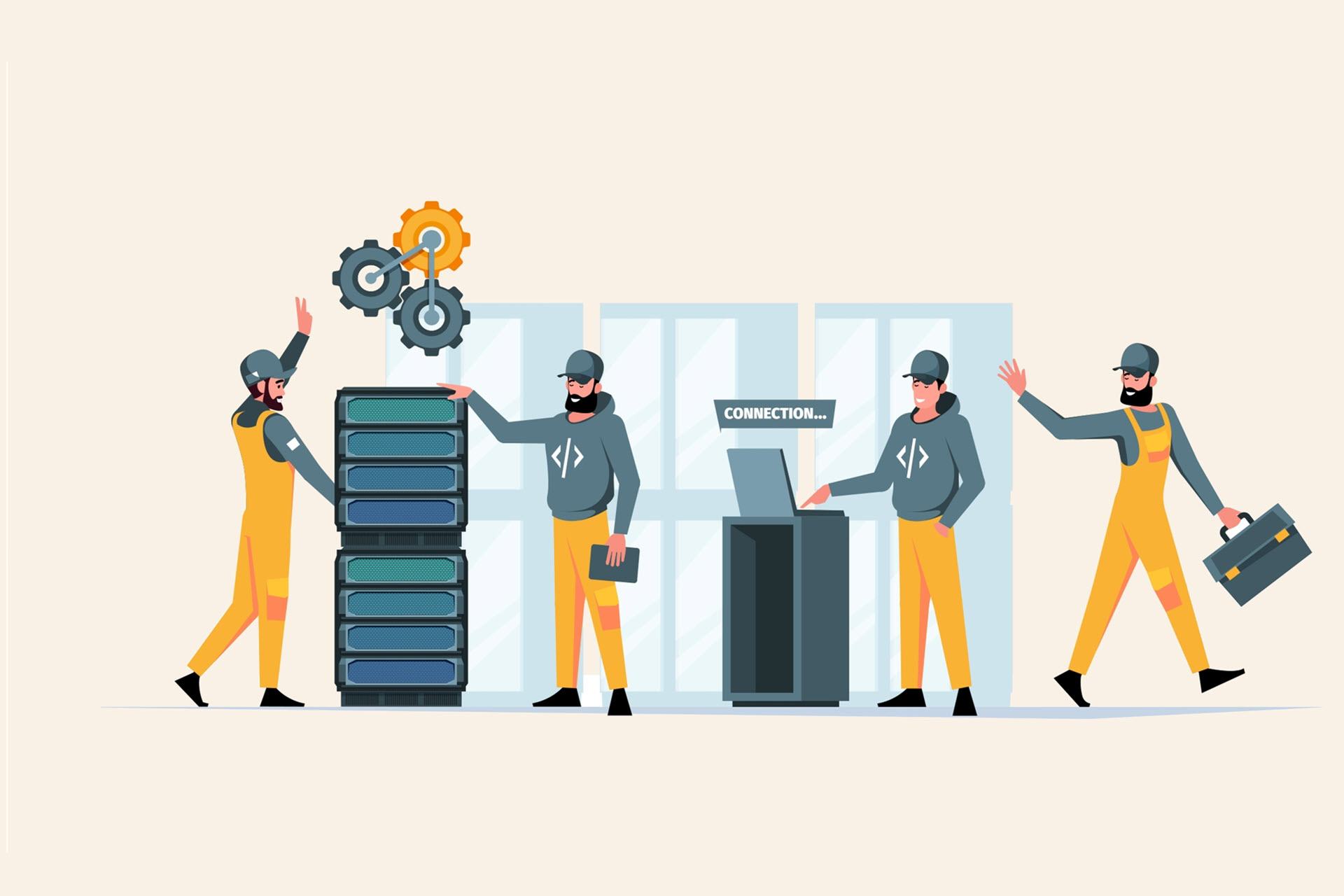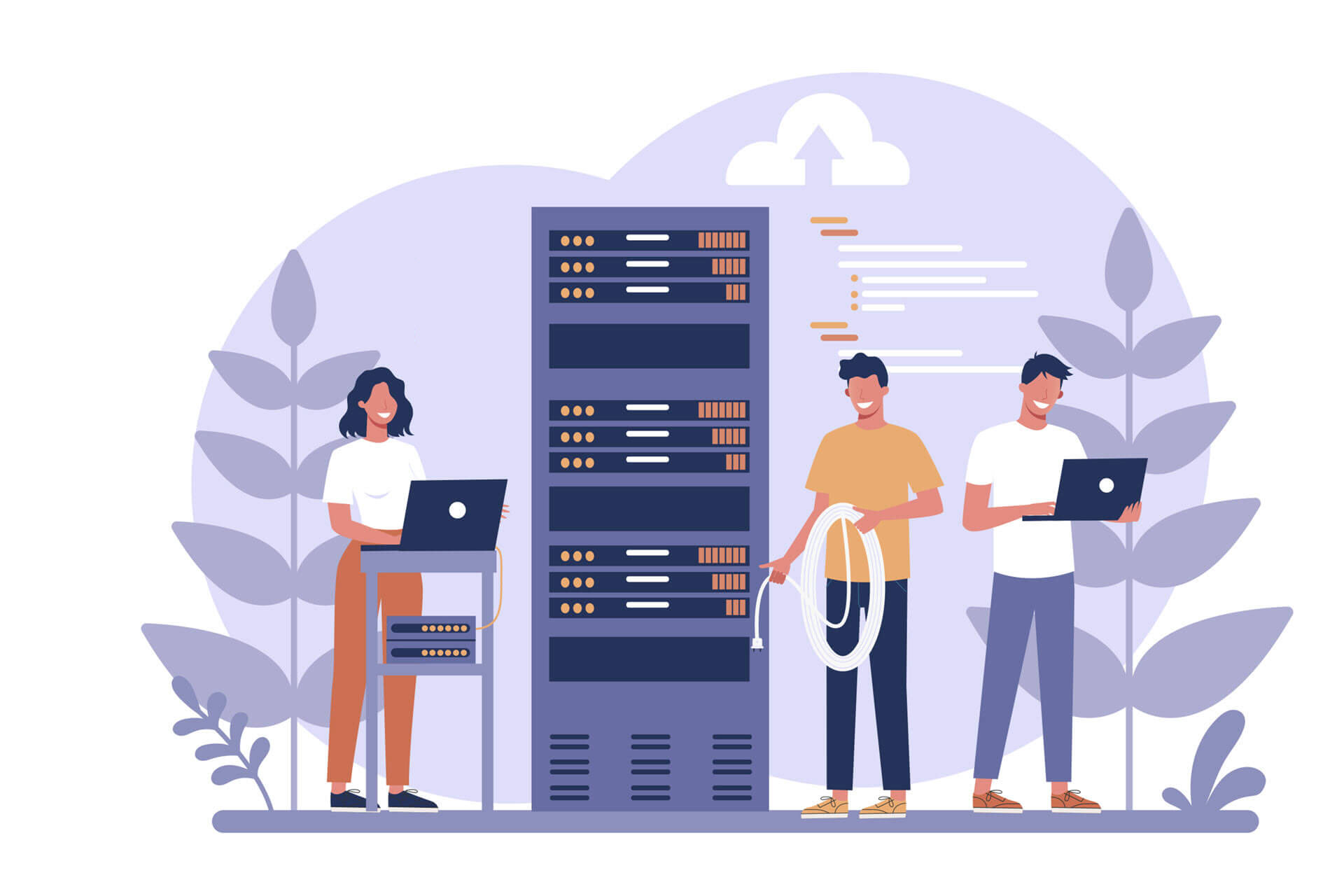Edge servers perform the same functions as traditional servers, but from unconventional locations. An edge server processes data physically close to the end-user, whether in a smart home, IoT-powered factory, hospital, or self-driving car. Running operations at the network's edge eliminates processing backlogs and distance lags, two prevalent issues of traditional servers.
This article offers an in-depth look into edge servers and the role these devices play in the current IT landscape. Read on to learn what edge servers are, how they work, and why these devices are a top choice for low-latency use cases.
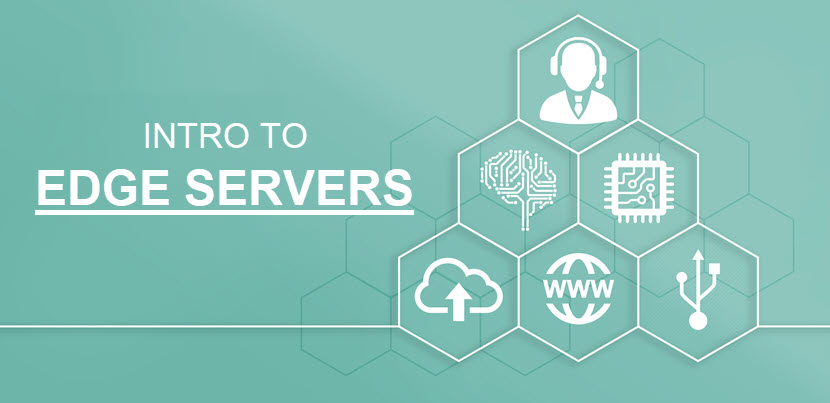
What Is an Edge Server?
An edge server is a piece of hardware that performs data computation at the end (or "edge") of a network. Like a regular server, an edge server can provide compute, networking, and storage functions.
Edge servers process data physically close to the end-users and on-site apps, so these devices process requests faster than a centralized server. Instead of sending unprocessed data to and from a data center, these devices process raw data and return content directly to client machines. As a result, edge servers provide snappier performance, lower latency, and shorter loading times.
There are two types of edge servers:
- Content delivery network (CDN) edge servers. A CDN edge server is a computer with cached versions of static content from an origin server (images, JavaScript files, HTML files, etc.). A company can deploy CDN edge servers at various points of presence (PoPs) across a content delivery network.
- Edge compute servers. This server type provides compute resources at the network's edge. While a CDN server only delivers static web content, an edge compute server provides the necessary computing capabilities for IoT apps.
Keep in mind that there is a difference between edge servers and devices. The term "edge device" refers to hardware that provides an entry point to a network (such as a router or switch).
Learn more about edge computing and see how placing workloads at the network's edge can boost performance in various use cases and settings.
Edge Server vs Origin Server
A CDN edge and origin server typically work in tandem to deliver content to end-users. The two devices have similar abilities, but they play different roles in the content-delivery process.
An origin server is a computer that runs programs for listening and responding to internet requests. Depending on the distance between the origin server and the user, responses may come with a delay. The additional round-trip time (RTT) required to establish a secure internet connection using SSL/TLS can also increase latency.
A CDN edge server significantly reduces latency by sitting between the origin server and the requesting machine. By hosting static assets in a strategic location close to the client machine, an edge server speeds up the time it takes for a web resource to load.
Here's an example of how an edge and origin server work together to serve up a login page:
- The user sends a request to access the login page.
- The CDN uses Anycast DNS to determine the closest CDN edge server and routes the request to that device.
- An edge server loads the static content and returns it to the user device, thereby eliminating bandwidth consumption by the origin server.
- Once the page renders, the user enters their username and password.
- The request for dynamic content travels to the edge server, which then proxies the request back to the origin server.
- The origin server verifies the user's identity in the associated database and sends back specific account data.
Edge servers are not a replacement for origin servers (or vice versa). An origin server is vital when using a CDN server, as it hosts operations that are unsafe for the edge. Good examples include databases of hashed client credentials used for authentication, as well as vulnerable backends.
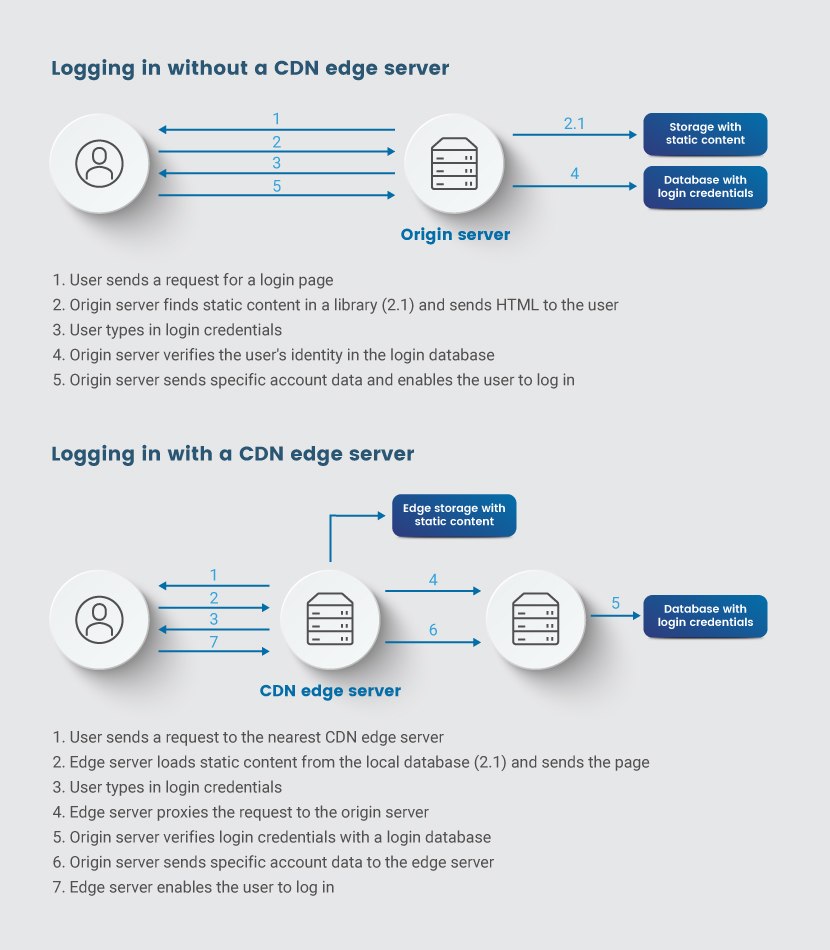
Edge Server vs Cloud Computing
Cloud computing is the act of running a workload on a cloud, a software-defined environment created by a data center or server farm. Edge computing involves running a workload on an edge server, a piece of hardware that operates outside of a data center.
While different, edge and cloud computing are not mutually exclusive. An edge server can be considered part of a cloud when its storage and computing resources are abstracted. Both edge and cloud computing can utilize containers, which are software packages that run on any cloud deployment model.
Our comparison of edge and cloud computing goes in-depth into the subject and explains the pros and cons of each computing model.
How Do Edge Servers Work?
An edge server sits between and interfaces with two different network points, operating between producers and consumers of data. There is no set definition on how close the server must be to either endpoint, so there are four types of edges:
- Device edge (the server is a component within the end-user device).
- Network edge (network-specific nodes such as base stations or telco data centers).
- On-prem edge (nodes physically located in the local network or facility).
- Regional edge (the server is in a traditional local data center).
Here is an example of how an edge compute server that sits between IoT devices in a factory and the enterprise data center works:
- Various IoT devices on the factory floor (cameras, thermometers, sensors, etc.) interact with and send data to local edge compute servers.
- Servers provide local processing, storage, and data analysis to give visibility into production.
- If an IoT sensor detects, for example, a significant rise in a machine's temperature, the edge server recognizes the issue in real-time.
- The edge server stops the production before the machine overheats.
- The edge compute server sends relevant processed data to a corporate data center, where humans can make a maintenance plan.
In this example, the edge server significantly reduces bandwidth to and from the corporate data center. Without the server, the data center would receive unprocessed data directly, causing latency that can lead to equipment damage or a fire.
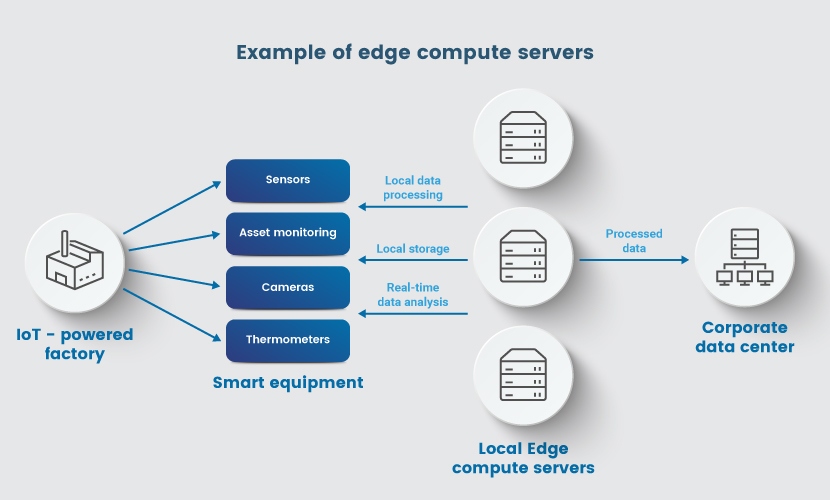
Edge Server Use Cases
An edge server is a good choice for most use cases that require fast, real-time data processing. These devices are also an excellent fit for use cases where deploying standard, bulky servers is not feasible. Here are some examples of how companies put edge servers to use:
- Servers within IoT sensors on industrial equipment.
- An app that streams movies and TV shows through an edge server with cached videos.
- Surveillance sensors that have a local server for real-time data analysis.
- A banking app that uses an edge server for quick performance but isolates sensitive data on the origin server.
- A hybrid cloud architecture in which centralized computing handles compute-intensive workloads while an edge server addresses workloads that need real-time processing.
- IoT devices that perform in-hospital patient monitoring.
- Self-driving cars that collect large volumes of data and make decisions in real-time.
- Edge servers that provide remote monitoring of oil and gas assets.
Our software-defined edge computing servers are an ideal choice for any use case with low-latency and real-time processing demands.
New Bare Metal Cloud Edge location launched in Austin, Texas!
Advantages and Disadvantages of Edge Servers
Like most technologies, edge servers have specific benefits and drawbacks. Let us examine the pros and cons of edge servers in more detail.
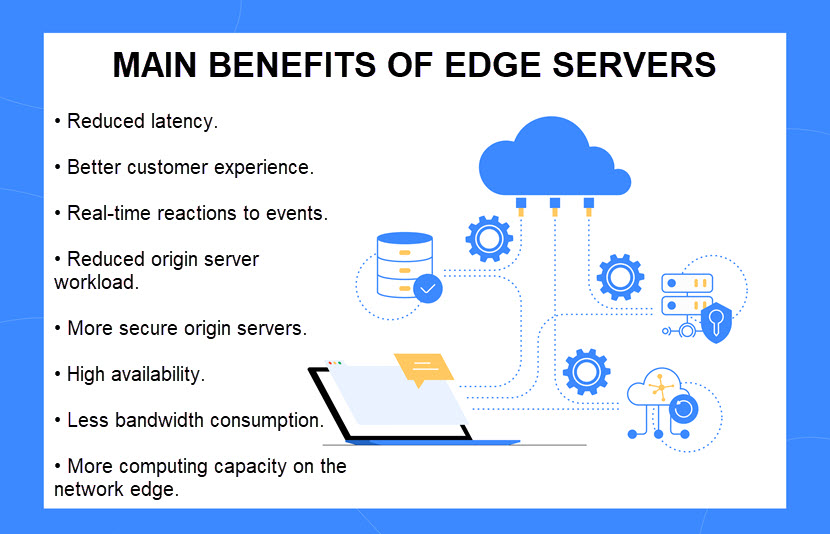
Advantages
Here are the main benefits of using an edge server:
- Reduced latency: End-users experience better performance and faster loading times when they request content from a geographically closer server. In an industrial setting, the lack of latency means IoT and AI-powered devices can make split-second decisions and immediately respond to a risky situation.
- Increased origin server security: A CDN edge server hides the origin server's IP address and proxies requests from clients. This networking model improves data integrity and privacy while reducing the origin server's exposure to DDoS attacks.
- Reduced origin server workload: Sudden traffic spikes can impact the performance of an origin server. As a CDN server takes on most client requests in a region, your origin server is less likely to experience performance issues.
- Reduced bandwidth requirement (and cost): An edge server reduces the need to exchange data with external networks. This capability leads to lower network bandwidth requirements and reduced costs.
- Greater computing capacity: Edge servers provide computing capabilities that supplement limited local devices.
- Better data security: With fewer data transmissions to external locations and shorter transit times, there are fewer open connections and opportunities for cyberattacks. Also, since you no longer store or process data on a centralized system, you limit the consequences of a successful data breach.
- Better availability: Even if the origin server goes down, edge servers can maintain the functions in the local network. This capability is good for customer experience but vital for healthcare apps and critical control systems.
Read about the benefits of dedicated servers and see why sharing hosting resources with other tenants is usually a bad idea.
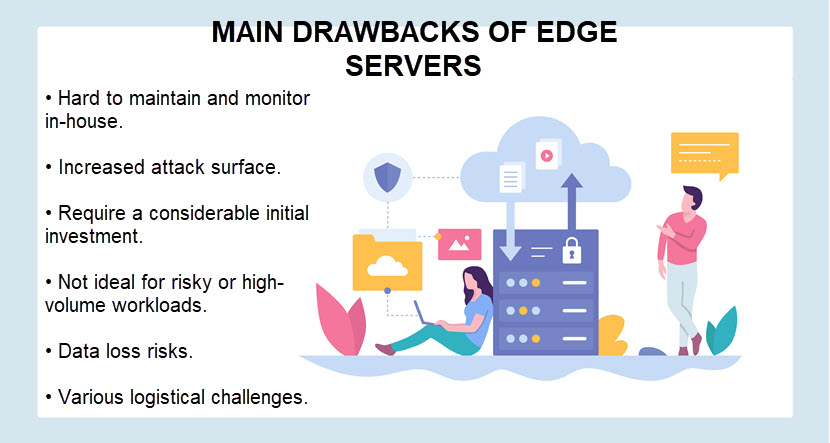
Disadvantages
There are also some downsides to using edge servers. If you are considering deploying an edge server, you should keep the following disadvantages in mind:
- Bigger attack surface: Although edge servers provide security enhancements in certain areas, the increased number of servers also increases the potential entry points into the network. Failing to maintain one of the edge servers properly can expose you to data leaks or breaches. Also, security risks on a local level (such as inexperienced teams and weak passwords) complicate cybersecurity.
- Challenging maintenance: Edge servers operate in various geographic locations, necessitating companies to establish processes for monitoring, maintaining, and updating their equipment. Handling these tasks in-house is challenging, whereas outsourcing server management incurs additional costs and coordination challenges.
- Not ideal for risky workloads: Securing data in transit over a network is typically easier than securing data during processing. Edge servers are unsuitable for high-risk workloads, sensitive data, or processes with unique compliance requirements.
- High cost: Deploying and maintaining numerous geographically dispersed servers is costly. Not only do you need to purchase hardware, but you also require advanced infrastructure and a skilled team to get the most out of the edge.
- Data loss risks: Many edge servers discard irrelevant data after collection to handle high volumes of information. If the server discards relevant data by mistake, there is typically no way to retrieve the lost information.
- Problems with high data volume: Workloads with extreme data volumes can impact the performance of an edge server. If you have a workload that generates vast amounts of data, it is likely cheaper and easier to move the data to a data center or public cloud.
Our article on edge computing challenges goes in-depth into the problems of edge servers and, more importantly, how to solve these issues.
The Future of Edge Hardware
Here is a quick overview of what you can expect to see from edge servers in the future:
- Hardware-as-a-service: The As-a-Service business model for edge hardware is expected to gain popularity as companies seek to eliminate upfront investments in edge equipment. We expect growth in both our subscription and consumption-based models, as well as an increase in managed services for edge hardware.
- Convergence of storage and compute resources: Converged infrastructure enables a piece of hardware to have both storage and compute resources. Companies with ultra-low latency use cases will continue to push towards computational storage to reduce the amount of data moving between the library and compute plane.
- Aligning with the hybrid cloud: Edge hardware will continue to drive companies towards hybrid cloud solutions. Edge servers are a natural fit with the hybrid cloud's "the best tool for the right job" mindset. They can also significantly improve the speed and reliability of a hybrid system.
- Breakthroughs in 5G: Edge servers will continue to help telco companies handle 5G traffic. An edge server near a cell tower will be vital for developing low-latency use cases such as smart cars and cameras.
- The rise of confidential computing: In addition to at-rest encryption for local storage and in-transit protection, setting up confidential computing at edge hardware will become a priority as companies look for ways to protect data during processing.
PhoenixNAP's confidential computing enables you to deploy end-to-end encryption and ensure data remains safe at all times, both on-site and within edge servers.
Is Your Use Case a Good Fit for Edge Servers?
Edge servers have some unique challenges, but the benefits of edge computing are hard to ignore. You can uncover new business opportunities, improve operational efficiency, and provide a quicker, more reliable customer experience. These advantages outweigh any drawbacks, so you should definitely consider edge servers if your use case can benefit from local data processing.
Check out our article on IoT edge computing and the benefits of taking action on data as close to its source as possible to learn more.
